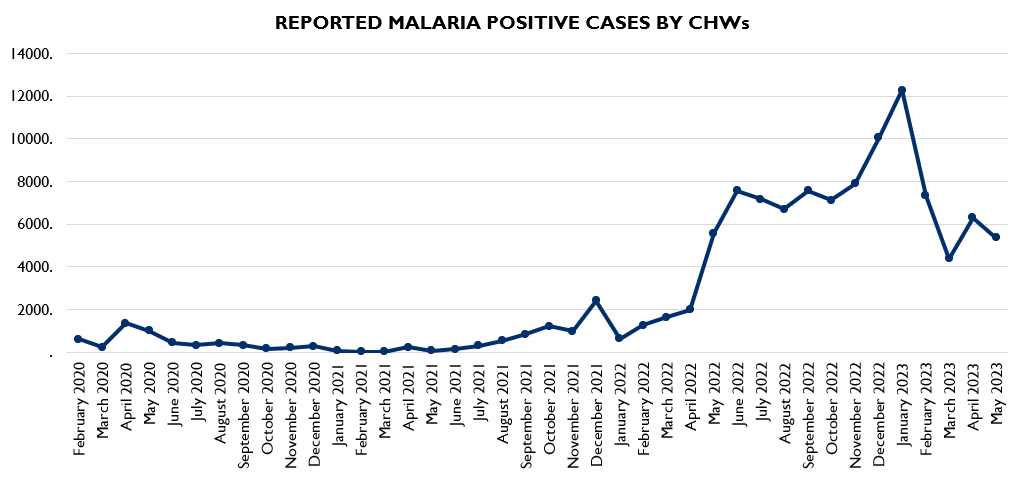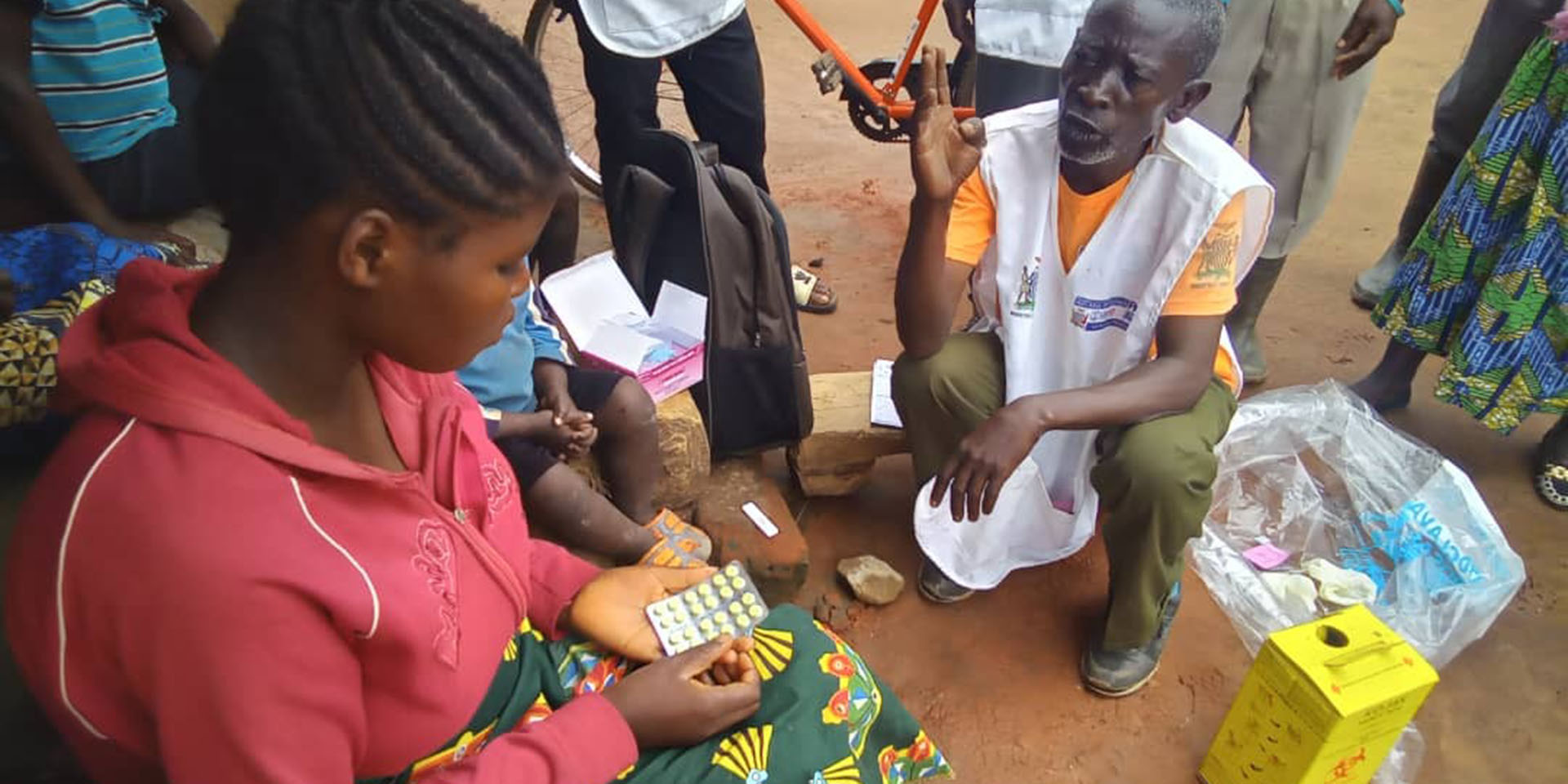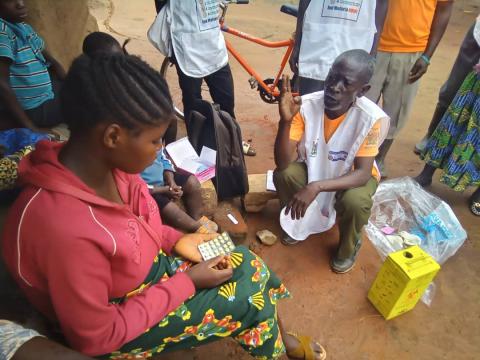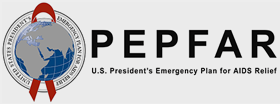GHSC-PSM facilitated an appeal to the provincial/district supervisors during the 2021 Regional Supply Chain Review Meeting (RSCRM) to ensure that an upward adjustment was made on approved order quantities of RDTs and ACTs. In Nchelenge District, for example, this collaboration resulted in an improved provision of malaria supplies to CHWs and, consequently, an increase in iCCM activities at the community level. This in turn led to a rise in malaria case detection by CHWs, from 79 cases in May 2021 to 5,366 cases by May 2023.
"The supply of malaria commodities for iCCM has really helped reduce malaria in our community, because when anyone develops a headache, fever and/or body pains they easily and quickly visit us (CHWs) and we detect and treat malaria early, unlike when they had to go long distances to the health facility," says Godfery Kasakula, a CHW in Nchelenge District.
The impact of the availability of malaria supplies on iCCM activities in the Nchelenge District is demonstrated in the graph below, which presents data for the period between January 2020 and May 2023.

The graph showcases the positive correlation between the availability of malaria supplies and the successful implementation of iCCM, contributing to a tangible reduction in reported malaria deaths from 10 deaths in May 2021 to 5 deaths in May 2023. This is according to data from the National Malaria Elimination Centre (NMEC).




